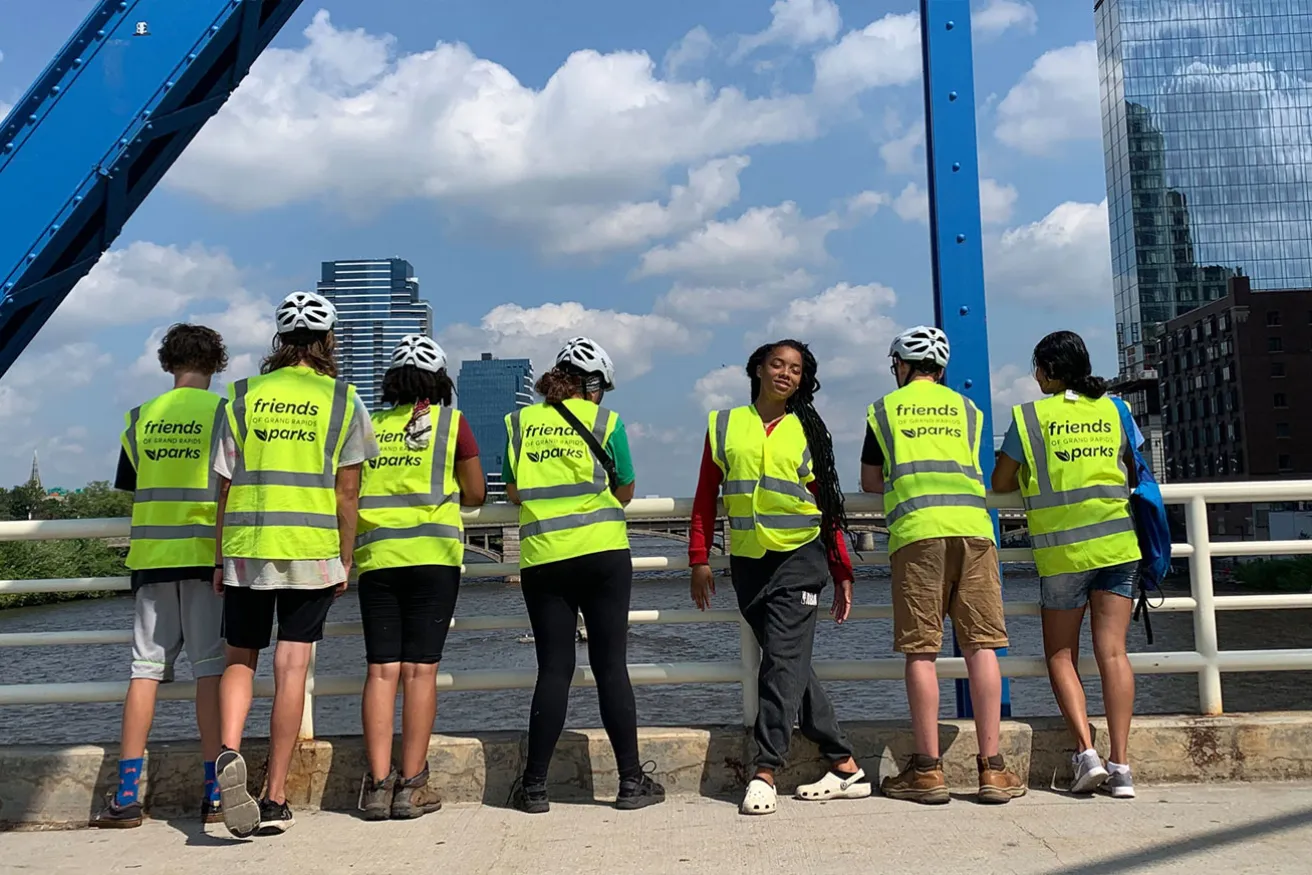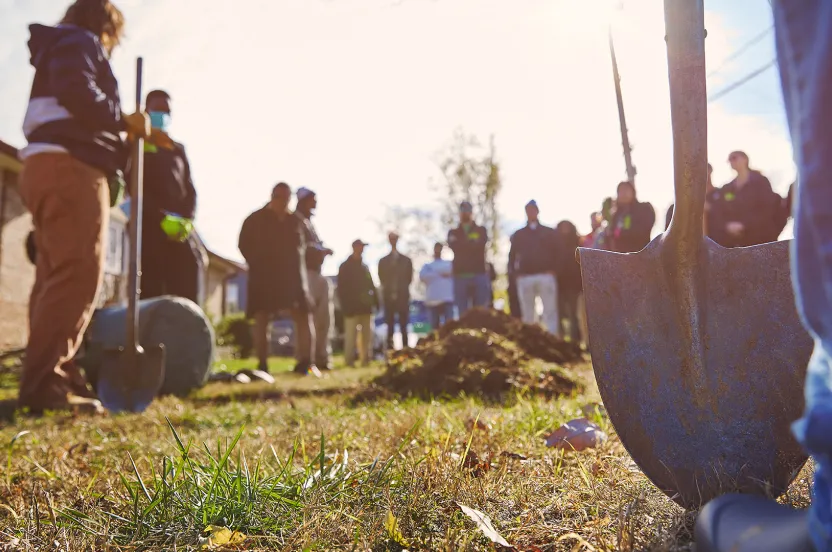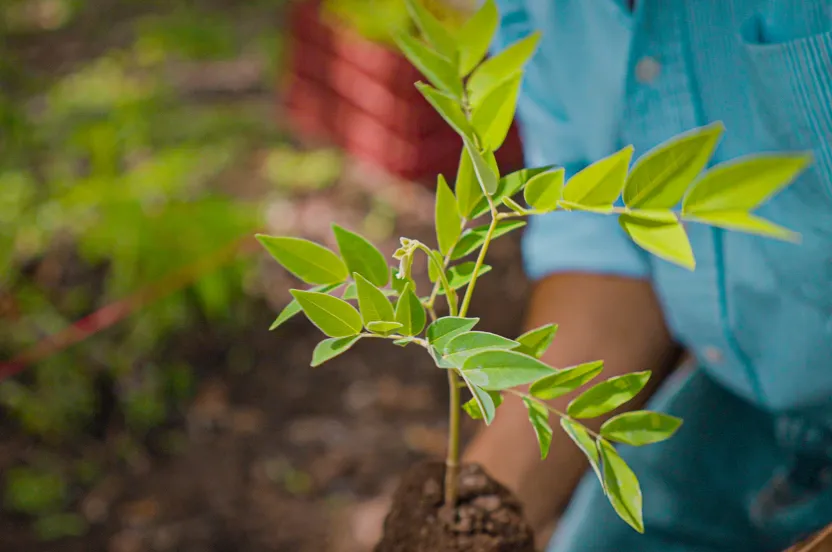The Arbor Day Foundation is pledging 10 million trees to areas impacted by hurricanes Helene, Milton Help us replant
A Michigan Community on a Mission
In Grand Rapids, the focus is on engaging neighborhoods and planting trees where they are needed most.
June 11, 2024

Less than an hour from the shores of Lake Michigan sits Grand Rapids, a city with a population of nearly 200,000 people and a unique combination of urban amenities and small-town charm.
It also has plenty of outdoor opportunities. A total of 76 public park spaces stretch across approximately 600 acres and offer a wide range of ways to engage with nature.
Despite the expansive parkland, however, Grand Rapids needs more trees.
The citywide tree canopy cover goal here is 40%, and local nonprofit planting partner Friends of Grand Rapids is dedicated to helping the community reach this goal. Some neighborhoods are more than halfway there; others are very far from this target. The reality is that, as with so many other cities, Grand Rapids is facing the consequences of historical redlining.
Lack of investment in green infrastructure for the disenfranchised portions of the city can be seen in several ways. One is the lower number of large, well-established, well-cared-for trees. Another is fewer public green spaces. Remember those 76 parks? According to Lauren Davis, director of programs for Friends of Grand Rapids Parks, they aren’t necessarily equally distributed. Nor are the amenities they offer.
What is Redlining?
According to the Legal Information Institute at Cornell University, redlining can be defined as “a discriminatory practice that consists of the systematic denial of services such as mortgages, insurance loans, and other financial services to residents of certain areas, based on their race or ethnicity.” This idea also applies to green infrastructure as, historically, funding for trees and green spaces was often not provided to low-income and minority neighborhoods.
“The same communities that are lacking trees and green infrastructure, oftentimes because of historical redlining, are also missing park space or the opportunity to connect with green space,” Lauren added. These continue to be the spaces in Grand Rapids that need trees most.
Connecting With the Community, Inspiring the Next Generation
The neighborhoods identified as priority areas for tree planting are also parts of the city where residents have often been more hesitant of municipality work and tree planting. “There is a decades-long history of a lack of trust,” Lauren said. To help build that trust, he and his team focus on connections.
Often, this means showing up again and again — being a recognized face among neighbors. (Lauren has been identified most often as “that tree guy.”) It also means listening, even if what residents are sharing is that they don’t want a street tree in front of their house.
Involving residents in work happening in their own neighborhoods is also important. One way Friends of Grand Rapids Parks does this is through the Youth Green Team. All the trees being planted need to be watered, so high school students are hired each summer to do the watering. “We do our best to hire folks from the neighborhood where we’re doing the work,” Lauren said.
Last summer alone, the Youth Green Team cared for 1,000 newly planted trees. That’s a lot of 5-gallon buckets of water. It’s also a lot of trees set up to survive their first year in the ground.
And as the Youth Green Team waters the trees to improve their neighborhoods, the neighbors come out to appreciate their hard work. One homeowner — adamant that he didn’t want a tree added to his yard — brought out sports drinks on a hot day. Another insisted they take a break to enjoy breakfast in her backyard.
The work is hard for a teenager, but the pay is good and the experiences can be life-changing. In addition to watering, the team gets the chance to learn more about nature, forests, conservation, and even potential career opportunities. For some, this has been truly inspirational. “We’ve had multiple members of the Green Team who decide, ‘Hey, I’m doing this tree stuff now. This is what I’m going to college for.’ When they met us, they had never had these conversations before,” Lauren said.
One of last summer’s team members invited staff to attend her quinceañera. For the team, this is a favorite memory. “During the ceremony, the priest mentioned how the team’s guidance and mentoring shaped her passion for a future in forestry. Her dress was green and there were leaves decorating the room. And it was just like, man, I got all the feels.”
The Power to Create Change
These are moments that matter. Connections that will last a lifetime. Bridges being built within the community so all residents can enjoy the benefits of a greener future.




